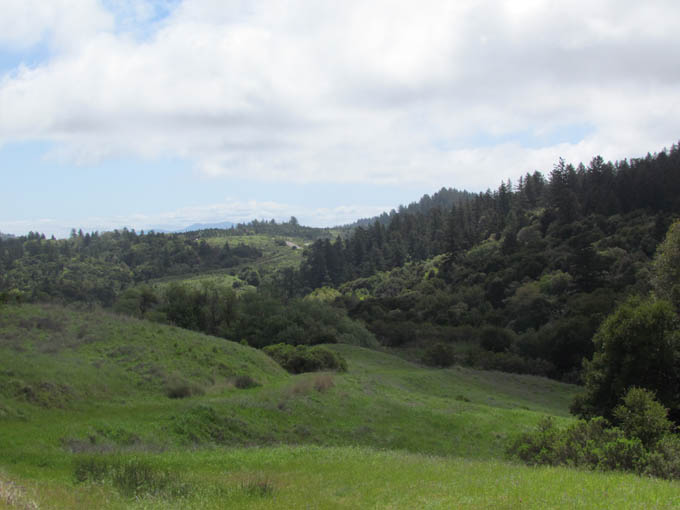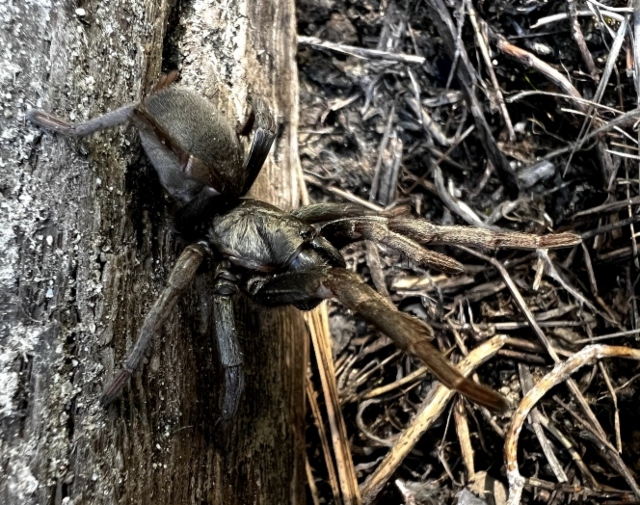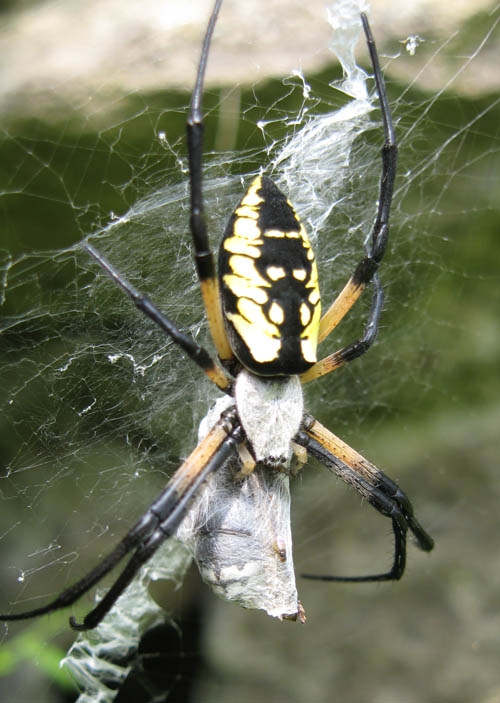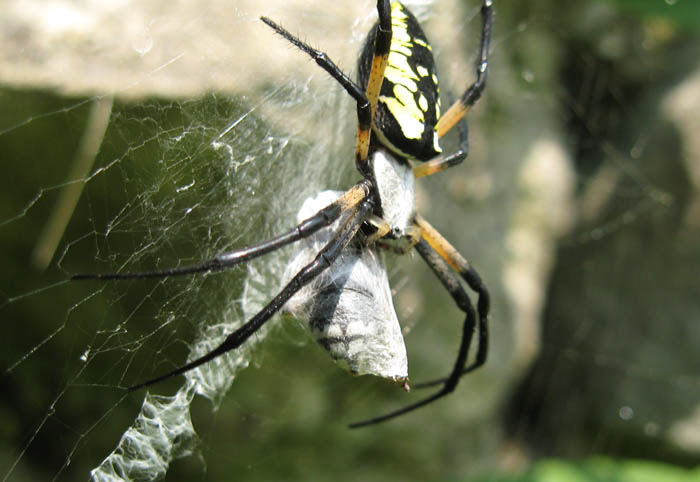By looking under a rock found on a hillside, I found the biggest wild spider I’ve ever seen – a False Tarantula. These creatures are about the same size as the local tarantulas but they are in a different family of spiders.
These spiders usually safely hidden in their self-made caves; wandering males are what most people tend to encounter. They share many similar characteristics as “real” tarantulas, which is why the two are often confused.
False Tarantulas occur all over California from sea level to the high Sierra Nevada Mountains. Their reclusive habits and nocturnal behavior keep them hidden from view most of the time, so they aren’t commonly encountered.
It is brown to silver gray in color and has fine hairs all over its entire body. This tarantula look-alike behaves much like its larger cousin. If threatened, it will rear up and expose its fangs as a warning to its perceived attacker. Finding this big arachnid was one of the highlights of my California trip.








